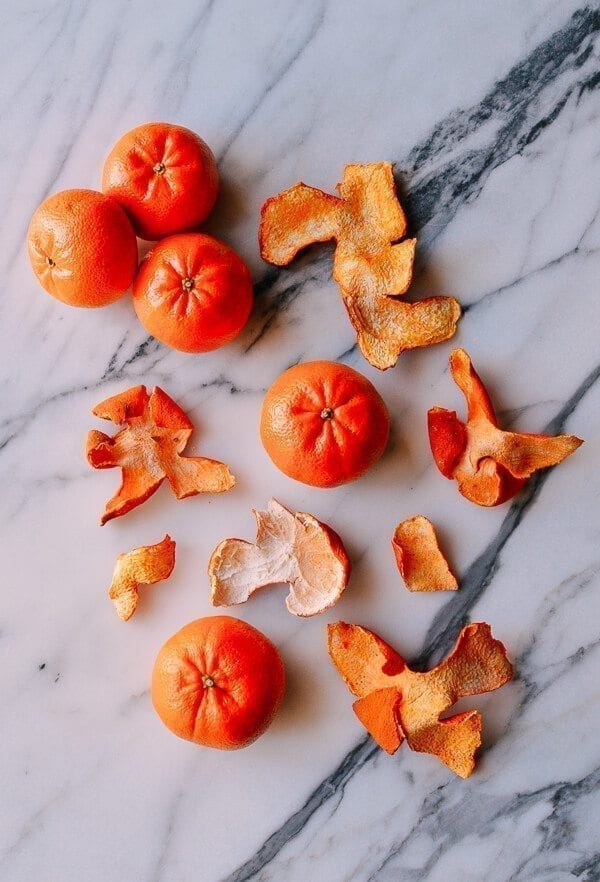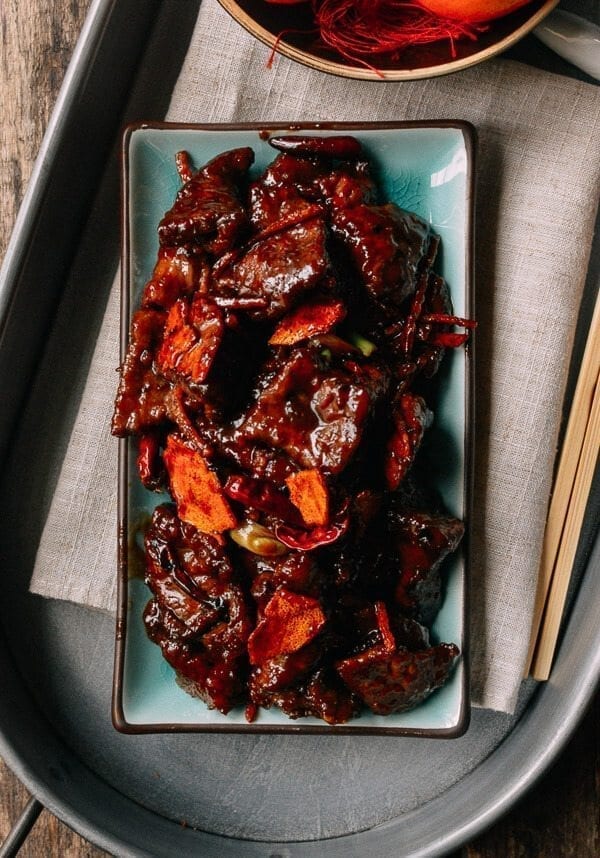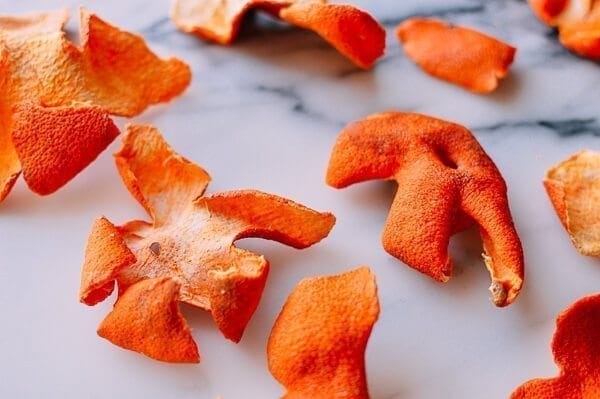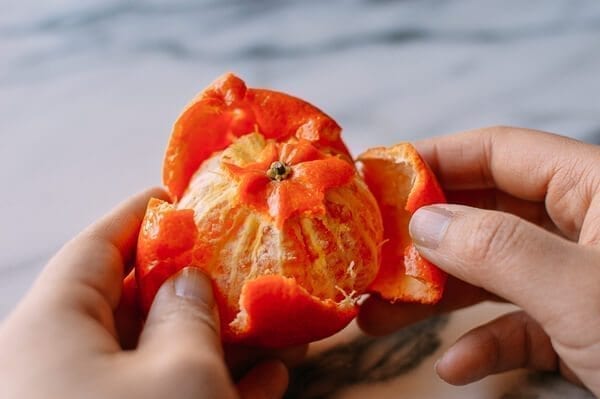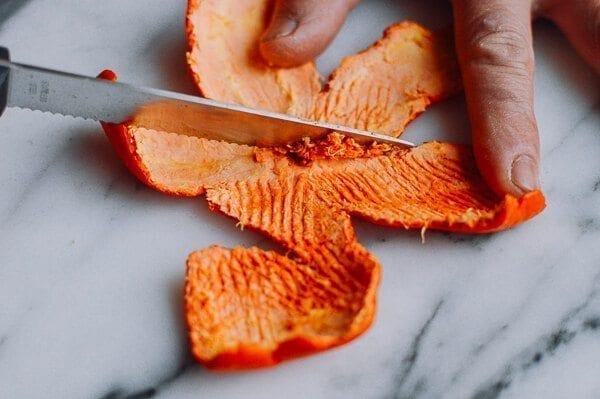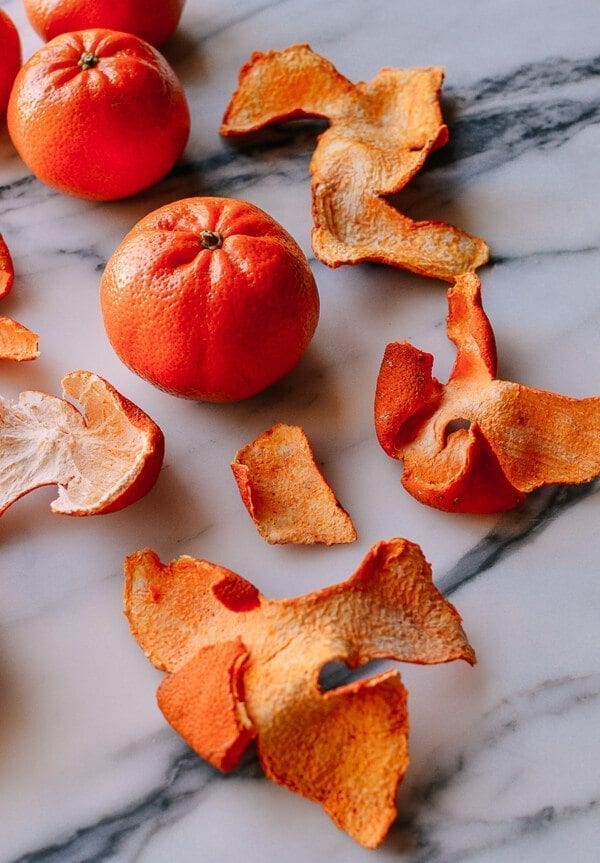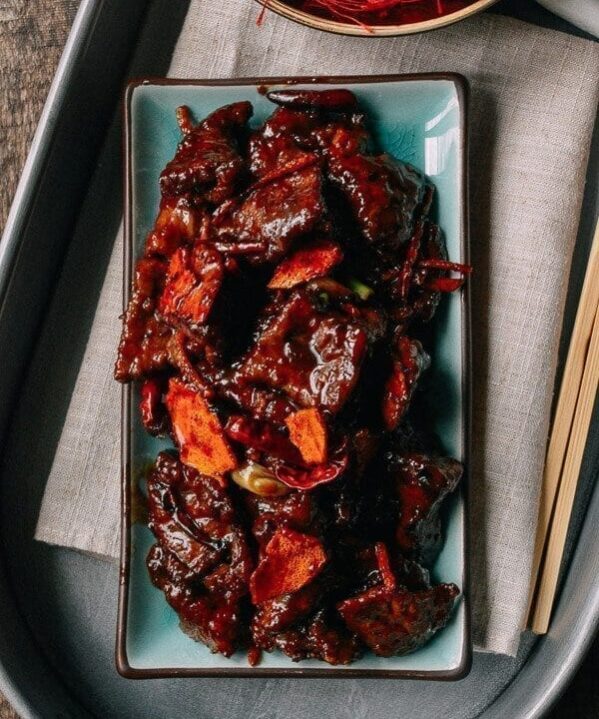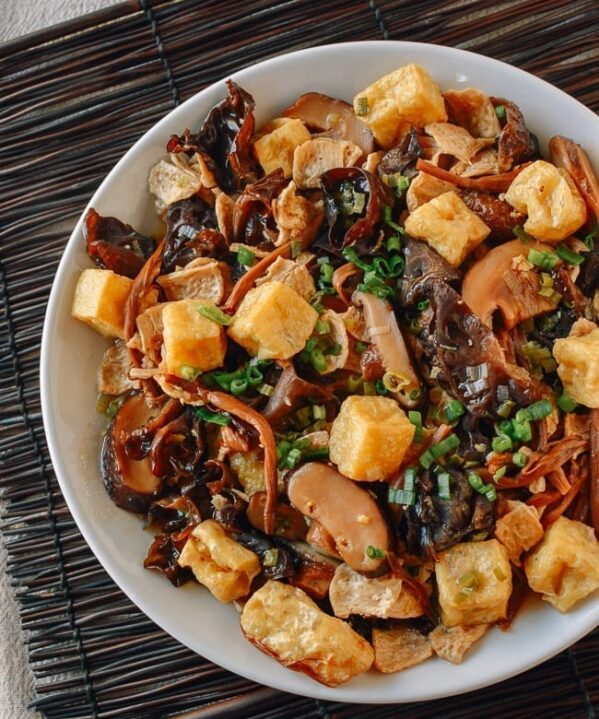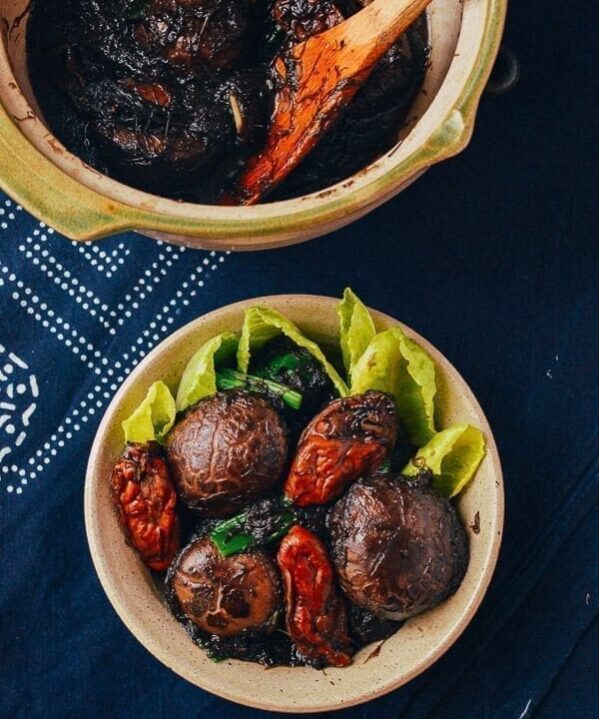How do you make dried tangerine peel (chén pí 陈皮)? Or maybe the question is, why would you want to?
Here’s why: dried tangerine peel is one of the key aromatic ingredients in many Chinese dishes, like one of our favorites, Tangerine Beef. (I’ve compiled a more comprehensive list of recipes using dried tangerine peel at the end of this post, so definitely check that out.)
Dried Tangerine Peel: An Important Chinese Ingredient
Not only is dried tangerine peel used in traditional Chinese cooking, it’s also used in Traditional Chinese Medicine (TCM). If you’re familiar with the TCM energy categories of warm (yang) and cool (yin), tangerine peels are in the warm category.
Judy occasionally refers to TCM and the medicinal properties of different foods in her recipes, and Sarah did get a real “taste” of TCM after she visited a traditional Chinese Medicine doctor in Beijing. You can read about her experience with TCM remedies here. Clearly, different generations have varying opinions when it comes to this stuff.
Easy to Make at Home Without Special Equipment
For me personally, I just like cooking with dried tangerine peel, and discovering how to make my own chen pi at home was a revelation! So the next time you have a mandarin orange, tangerine, or even a clementine lying around, remember this tutorial, and save those peels for the pantry.
Like herbs, tangerine peels become more pungent when dried. The color of the peel also gets darker with age. Some say that the value and flavor of dried mandarin orange peels increase with age, so don’t let the dark color of the aged tangerine peel turn you off!
Xinhui, a district of Jiangmen City in China’s Guangdong Province, is famous for making dried Xinhui mandarin orange peels. The mandarin oranges in Xinhui are green and quite sour when harvested for their peels.
I vaguely remember seeing the process in an episode of “A Bite of China,” which, by the way, is the best TV show out there on authentic Chinese food. I’m not sure what they did with the actual fruit, but the workers were hand-harvesting the peels and letting them dry out in the sun.
And that’s really all it takes. It’s a pretty simple process, and a gateway to a wide variety of recipes. Here’s how to do it.
Recipe Instructions
Lightly score the surface of the tangerine peel from the top of the fruit to about two thirds of the way down to the bottom. Make sure you don’t cut the fruit on the inside, or the juice will moisten the peels, which you don’t want. Basically, scoring makes peeling the tangerine easier. But depending upon the fruit you have, it may not even be necessary.
Start peeling from the top of the fruit from where the stem once protruded and peel the tangerine skin back in wedges like you would peel a banana. Once you get to the bottom, pull the entire tangerine skin away from the fruit. Set aside the fruit and enjoy it later.
Next, use a serrated knife to carefully scrape away most of the white pith on the inside of the peel. This will prevent your dried tangerine peels from being too bitter.
Place the scraped tangerine peels on a sheet pan and leave it in the sun to dry. A sunny window sill is fine, but a sunny spot outside is better, as long as it’s not too humid. Turn the peels once a day for 5 days, until completely dry. The time it takes may vary depending upon climate and weather. The dried peels must be be hard and crispy, or they may spoil. Store the dried peels in an airtight container––we like to use canning jars for this purpose.
For more info, dried tangerine peel is also listed on our Chinese Spices and Condiments page along with a host of other ingredients. Refer to that page and our Chinese Ingredients Glossary if you have questions about any of the ingredients used in our recipes.
Also enjoy our growing list of recipes that use this delightful ingredient. You can see that the list is pretty long, so go out and buy some tangerines and start drying!
Dishes using dried tangerine peels as a primary flavor:
Dishes using dried tangerine peels as a complementary flavor:
- Spiced Braised Beef Shank
- Braised Beef Noodle Soup
- Braised Pork Trotters with Soybeans
- Spicy Beef Noodle Soup
- Sour Plum Duck
- Lu Rou Fan
- Crispy Duck Wraps
- Coca Cola Chicken Wings
- Ma La Xiang Guo (Spicy Numbing Stir-Fry Pot)
- Roasted Braised Duck
- Lanzhou Beef Noodle Soup
How to Make Dried Tangerine Peel
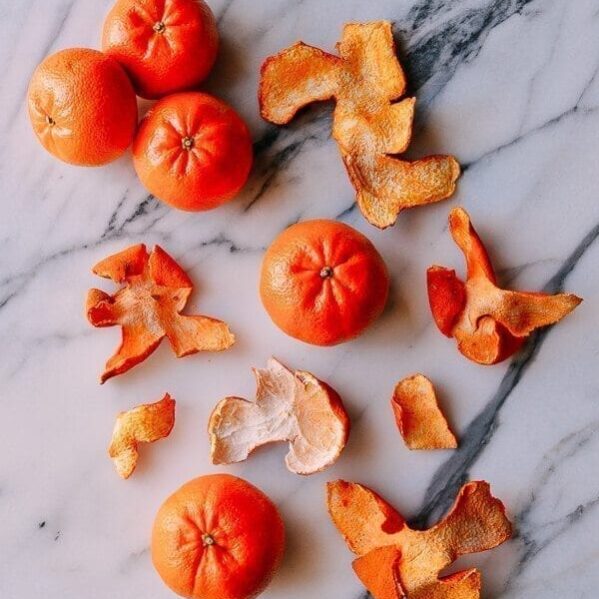
Ingredients
- 5 tangerines mandarin oranges, or clementines
- Sunshine
Instructions
- Lightly score the surface of the tangerine peel from the top of the fruit to about two thirds of the way down to the bottom. Make sure you don’t cut the fruit on the inside, or the juice will moisten the peels, which you don’t want. Basically, scoring makes peeling the tangerine easier. But depending upon the fruit you have, it may not even be necessary.
- Start peeling from the top of the fruit from where the stem once protruded and peel the tangerine skin back in wedges like you would peel a banana. Once you get to the bottom, pull the entire tangerine skin away from the fruit. Set aside the fruit and enjoy it later.
- Next, use a serrated knife to carefully scrape away most of the white pith on the inside of the peel. This will prevent your dried tangerine peels from being too bitter.
- Place the scraped tangerine peels on a sheet pan and leave it in the sun to dry. A sunny window sill is fine, but a sunny spot outside is better, as long as it’s not too humid. Turn the peels once a day for 5 days, until completely dry. The time it takes may vary depending upon climate and weather. The dried peels must be be hard and crispy, or they may spoil. Store the dried peels in an airtight container––we like to use canning jars for this purpose.
